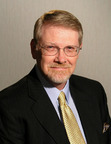Donovan R. Walling's Blog, page 2
October 5, 2015
Guns
“Bang, bang. You’re dead,” we yelled,Whooping and hollering, scampering
Among the trees, like cowboys on TV.Shot dead we rolled in fallen leaves,
Arms and legs flopping, then bouncedUp to chase and shoot again and again
Till nightfall came, streetlights blinked,And our mothers called us home.
Half a century now passed and kidsNo longer play cowboys in the woods.
Dead children no longer rise up againIn classrooms, churches, and theaters,
Where real bullets fly all too oftenAnd innocent blood stains the floor.
Toys no longer, guns are the deathOf culture, the demise of civility,
As love of power and of hate trumpSense, and love of money, money
Negates our duty to the livingAnd the dead, and the dead to be.
There will be more death. We know.We could change this future if—
If we had the will to stop pretendingGuns spell freedom with lethal rounds.
Guns write in death, and these cowboysCannot bounce up to yell “Bang, bang”
And hear their mothers call them in.Guns send them home alone, forever.
I wrote this poem in response to the latest mass shooting, which occurred in Oregon. In the previous post I discussed our American obsession with guns and the gun violence that comes from our collective inability to address resulting death and injury not as a threat to a supposed constitutional right but as a threat to the common good that is foundational in our democracy. Sensible gun laws, which are not universal in the United States but could, and should, be, are merely an essential starting point. However, such laws would lay a foundation for changing our pervasive gun culture and making our nation safer for all.

Published on October 05, 2015 07:57
August 30, 2015
Gun Violence as Entertainment
The United States will not take action to curb gun violence until such violence ceases to be viewed as entertainment.
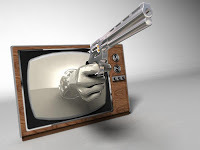 No one with any sense believes the government is out to take away guns from ordinary people, the folks who hunt, enjoy target shooting, and so on. Nor would even the most cursory reading of the Constitution lead anyone of good sense to believe that effective gun control somehow violates the Second Amendment. These are anti-gun-law arguments promulgated by the self-serving NRA and radical rightists bent on deluding the public for political gain. None of this blather would make any difference if the American public were sufficiently enraged by gun violence to take action. The sad fact is that the American public is not enraged by gun violence; it is entertained.
No one with any sense believes the government is out to take away guns from ordinary people, the folks who hunt, enjoy target shooting, and so on. Nor would even the most cursory reading of the Constitution lead anyone of good sense to believe that effective gun control somehow violates the Second Amendment. These are anti-gun-law arguments promulgated by the self-serving NRA and radical rightists bent on deluding the public for political gain. None of this blather would make any difference if the American public were sufficiently enraged by gun violence to take action. The sad fact is that the American public is not enraged by gun violence; it is entertained.The term ammosexualshould be a clue. Ammosexuals are those with an affection for firearms, those who see guns as sexy, those who wear guns a fashion accessories. But for every ammosexual there are ten or a hundred individuals who view, whether consciously or subconsciously, gun violence as entertainment.
Murder and mayhem as entertainment have a long history. Romans flocked to the coliseum to see prisoners torn apart by wild animals. Public executions across the centuries have drawn crowds in many nations eager to see people hanged, shot, beheaded, or worse. The lynching of black people was a popular U.S. pastime, particularly between 1880 and 1920, when nearly 3,500 African Americans were killed by mob violence.
The postmodern era has moved spectacle violence to the evening news, where it nightly entertains the population in reports mainly of gun violence. Mass shootings this year in the United States have become a near daily experience.
Digitized gun violence—television reports, newspaper stories, government statistics, and other sources of information, usually accessed by digital means—dampens the revulsion factor. Viewers are distanced from actual events. The violence becomes fictionalized, just another shoot ’em up at the OK Corral.
Twenty-seven killed in a Connecticut elementary school. Thirteen shot in a New York immigrant community center. Twelve killed in the Washington Navy Yard. Twelve killed in a Colorado movie theater. Nine killed in a South Carolina church. It’s all schadenfreude for the masses, rubbing their hands and tsk-tsking in front of screens.
Gun violence is real. When one’s children or parents or siblings or friends are injured or killed in gun violence, it is all too real. It’s not entertainment. It’s murder. When we finally come to our senses as a nation, no objections, no fake excuses, no hyperbole will be allowed to stand in the way of sensible gun laws.
But we’re not there yet. In the meantime, we will continue to allow the slaughter of the innocents—for the fun of it.

Published on August 30, 2015 14:20
July 8, 2015
The Dalai Lama and the Future of Tibet
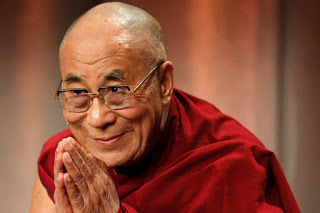 As Tenzin Gyatso, the 14th Dalai Lama, celebrates his eightieth birthday this week, there is again speculation in the world’s press about the future of Tibet—and, more precisely, the future of the Tibetan government in exile. A portion of that speculation naturally concerns the future of the role itself. Will there be a 15th Dalai Lama?
As Tenzin Gyatso, the 14th Dalai Lama, celebrates his eightieth birthday this week, there is again speculation in the world’s press about the future of Tibet—and, more precisely, the future of the Tibetan government in exile. A portion of that speculation naturally concerns the future of the role itself. Will there be a 15th Dalai Lama?As one commentator noted, when the Chinese government, which claims Tibet as its own and opposes the Dalai Lama, ramps up its opposition to the current Dalai Lama, his influence only grows stronger. Indeed, his holiness is the central, encompassing presence of Tibet in exile.
Tibetan history has always been fraught, no less so over the course of the 20th century and extending into the 21st. Thubten Gyatso, the 13th Dalai Lama, was born in 1876 and suffered exile various times before issuing a declaration of independence in 1912. No other state recognized Tibetan independence, however. Consequently the status of Tibet was still in flux when he died in 1933.
The current Dalai Lama was formally enthroned in November 1950 at the age of fifteen. Tibet at the time was engaged in a prolonged struggle with the People’s Republic of China, which then forced on Tibet an “agreement” for “liberation,” by which Tibet became essentially a Chinese province. Subsequently, in the wake of a revolt in Tibet, the Dalai Lama fled to India where he formed a government in exile that continues today.
Some years ago I wrote a brief history of Tibetan governance titled “Patrimonialist Rulership in Tibet: Four Historical Periods,” which appears in a collection edited by William H. Swatos, Jr., Time, Place, and Circumstance: Neo-Weberian Studies in Comparative Religious History, published by Greenwood Press in 1990.
I find it interesting to note that a number of today’s commentators are saying much the same thing that I posited some twenty-five years ago:
The Chinese may well choose to preserve (in appearance at least) Tibet’s traditional political-religious system by doing what the Tibetans themselves did in their dealings with the Mongols in the late sixteenth century. That is, when the exiled Dalai Lama dies, the Chinese may arrange for the discovery of his reincarnation among those more favorable to their rule.
Meanwhile, the current Dalai Lama continues to work for an autonomous Tibet and to foster peace. Tenzin Gyatso received the Nobel Peace Prize in 1989, a recognition that has been upheld by his continuing efforts on the world stage. Some years ago, when he visited Indiana University, where his brother was a professor for many years, I was able to attend a lecture he gave. My enduring impression is of a man devoted to peace.

Published on July 08, 2015 07:13
May 31, 2015
Remembering Bobby Short
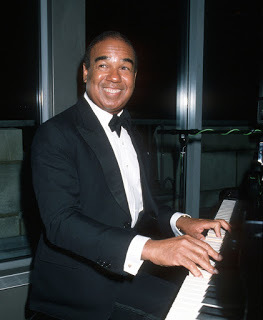 One of my favorite channels on Pandora is “Bobby Short,” which also segues to the likes of Frank Sinatra, Ella Fitzgerald, and others singers drawing from the “Great American Songbook.” But it’s Bobby Short whose voice and jazz piano stylings I listen for.
One of my favorite channels on Pandora is “Bobby Short,” which also segues to the likes of Frank Sinatra, Ella Fitzgerald, and others singers drawing from the “Great American Songbook.” But it’s Bobby Short whose voice and jazz piano stylings I listen for.Robert Waltrip “Bobby” Short, born September 15, 1924, died in 2005 at age 80. Self-taught, Short played the vaudeville circuit in the Midwest before he was a teenager. By age 12 he was headlining in Manhattan nightclubs and playing regular engagements at the Apollo Theater in Harlem.
In various clubs during the 1940s he made his name as a cabaret singer and pianist and that, more than anything else, was his claim to fame. In 1968 he took a two-week gig at New York City’s Café Carlyle and remained a featured performer there until near the end of his life. He was in his element performing music by Cole Porter, Noel Coward, Jerome Kern, Harold Arlen, and the Gershwins. In 2000 the Library of Congress named him a Living Legend.
Short embodied smooth sophistication. His suave musical performances were matched by his elegant, impeccable wardrobe. His voice had a characteristic warble reminiscent of the heartfelt tremble of Sidney Bechet’s soprano sax. He played the White House for Presidents Nixon, Carter, Reagan, and Clinton.
I never had the pleasure of seeing Bobby Short perform. But to hear him is to fall in love with the “Great American Songbook” all over again. Check out “Live from the Café Carlyle” on YouTube at https://youtu.be/PzWrXDzjA7Y.

Published on May 31, 2015 16:40
May 13, 2015
Sitcom Marriage
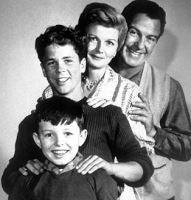
The so-called traditional marriage that rightwingers thump their bibles over is largely absent in biblical text. Man-woman marriage is there certainly, but so are man and brother’s widow, rapist and victim, man and multiple wives (with a few concubines thrown in), and so on. The “Christian” right traditional marriage actually is a sitcom staple from mid-20th century, the same era that gave us the corporate ad-gimmick God of “In God We Trust” (see the previous post, “God, Inc.”).
Some readers will be old enough to remember early television sitcoms that helped embed the “traditional marriage” notion in our collective consciousness: “I Love Lucy,” “Father Knows Best,” “Leave It to Beaver,” “The Dick Van Dyke Show,” and others. The sitcom family consisted of a working father (often the comic foil), a non-working but wise mother, and usually one or two children, good kids with a streak of mischief.
The traditional family sitcoms of the Fifties and Sixties idealized a dominant, though hardly universal, reality. According to Pew Research, the percentage of children living with two married parents in their first marriage in 1960 was 73%. As of 2013, that figure had dropped to 46%. Today a majority of children live in other, “nontraditional” families: 15% live with two married parents, one or both remarried; 34% live with a single parent; and 5% have no parent at home. So-called traditional marriage has been in decline for the past half century.
In fact, the vast majority of adults simply live together before or instead of marrying. According to a 2013 Centers for Disease Control and Prevention study, only 23% of “first unions” (couples sharing the same address) were marriages. “Cohabitation is a common part of family formation in the United States, and serves both as a step toward marriage and as an alternative to marriage,” the study said.
While the radical right consistently fails to deal with reality, that should be no excuse for the rest of us when it comes to validating successful family configurations—marriages—of all sorts, including non-marriages, such as single-parent families and couples living together without being legally married. The notion of marriage equality is anathema to the so-called religious right because it does not conform to the sitcom marriage ideal of the past. But it’s a mistake to cite the Bible as the source when “traditional marriage” actually comes from Fifties television.

Published on May 13, 2015 07:08
March 29, 2015
God, Inc.
 It’s hard to call oneself a Christian when so many who flaunt that label behave in such unChrist-like ways. Too often Christian is synonymous today with racist and homophobe, which leaves many who actually attempt to live out the principles attributed to Christ feeling as though they are victims of identity theft. I wonder if God feels the same way.
It’s hard to call oneself a Christian when so many who flaunt that label behave in such unChrist-like ways. Too often Christian is synonymous today with racist and homophobe, which leaves many who actually attempt to live out the principles attributed to Christ feeling as though they are victims of identity theft. I wonder if God feels the same way.The public context of God has been almost wholly subsumed in the identity of radical right “Christian” hegemony. Political Christianism is a rightwing gimmick. The God of “In God We Trust” is a “Christian” god for a “Christian” nation—both fictions designed to fool unthinking masses with feel-righteous rhetoric.
In a recent opinion piece in the New York Times (“How Business Made Us Christian,” March 15, 2015), Princeton history professor Kevin M. Kruse traced the formulation of God as an advertising ploy. Kruse attributes the mid-20th-century adoption of a decidedly Christianist God as America’s national trademark to the influence of business interests, particularly as stimulated and articulated by a young charismatic evangelist, Billy Graham.
Kruse quotes Graham as saying in 1952, “If I would run for president of the United States today on a platform of calling people back to God, back to Christ, back to the Bible, I’d be elected.” Republican conservatives have been banking on this ploy ever since.
Imagine a decade-earlier version of AMC’s Sixties advertising agency in Mad Men and one may better understand how corporate America began its drive toward oligarchy with the collusion of rightwing politicians. God got big in the 1950s. Government agencies initiated prayer services. In 1954 Congress added “under God” to the previously secular Pledge of Allegiance, and that was the year “In God We Trust” got added to postage stamps. The next year the phrase was added to U.S. currency. And in 1956 it became the official national motto.
In the current national debate about the character of the United States—a debate that affects education, the arts, the sciences, politics, global affairs, and all the rest—it is useful to remember that the public “God,” like the notion of being a “Christian nation,” is a recent invention—at root merely a crass advertising ploy and propaganda with no actual foundation in faith.
This essay is cross-posted on two blogs: Advancing Learning and Democracy (http://advancinglearning.blogspot.com) and Arts in View (http://artsinview.blogspot.com).
Published on March 29, 2015 10:46
February 11, 2015
Language of Bias and Privilege
 The headline read, “Muslim Americans Killed.” They were college students. Why not “Americans,” “students,” or simply “people”? The killer, who confessed and turned himself in, was “alleged killer,” not “Christian American” or “Christian extremist” or “Christian terrorist.” The killer was white, but readers only knew that because his photograph accompanied the article. If he were black, the article surely would have said so. It also didn’t note that he professed to be Christian, but most readers would assume that—and probably not want it mentioned. To say that the killer was Christian would be to view Christians in the same monolithic way that Muslims are too often viewed in the press.
The headline read, “Muslim Americans Killed.” They were college students. Why not “Americans,” “students,” or simply “people”? The killer, who confessed and turned himself in, was “alleged killer,” not “Christian American” or “Christian extremist” or “Christian terrorist.” The killer was white, but readers only knew that because his photograph accompanied the article. If he were black, the article surely would have said so. It also didn’t note that he professed to be Christian, but most readers would assume that—and probably not want it mentioned. To say that the killer was Christian would be to view Christians in the same monolithic way that Muslims are too often viewed in the press.The language we use, or choose not to use, identifies our biases. It preconditions our conclusions. The use of “Muslim” as a modifier situates these killings in the larger context of our notions about Islam and our stereotypes. Some readers will immediately see the homicides as tragic reminders of our society’s often mindless prejudice against Muslims. Other readers, who view all Muslims as evil, will automatically side with the killer. Both are biases.
If being Muslim was a factor in the victims’ murders, then should not the religious affirmation of the killer also be a factor? Imagine the reverse. Would a headline ever read, “Christian Americans Killed”? Certainly not in a domestic newspaper and certainly not without a comparable identification of the killer as some sort of religious fanatic. In the United States media language nearly universally privileges “Christian” and “white” by omission. Villains and victims alike who are not Christian or white are identified by a racial, ethnic, national, or religious adjective. The bias is clear. These modified Americans are second-class citizens at best. Their foreignness is emphasized.
It may be impossible to neutralize our language. The media may find it simply too mundane to report, “Three Students Killed,” and then delve objectively into possible religious bias as the killer’s motivation. Perhaps, as an alternative, we might strive at least for truth in labeling. If we must headline, “Muslim Americans Killed,” then we should in fairness label the killer as a “Christian fanatic.”
Published on February 11, 2015 05:30
February 9, 2015
The Erosion of Common Ground
 A hive of intellectual curiosity and pursuit. That was my impression as I looked up from the new Alexander McCall Smith novel I was sampling in the New Books section of our public library. Before me, spread throughout the spacious, well-appointed library were patrons of all ages, even college students in spite of the fact that the university nearby has several extensive libraries as well. The public library is a citizens’ space: common ground for the common good. Ours is heavily patronized by readers young and old across the economic strata. Yes, a number of homeless individuals take shelter there, reading the day away or using the pubic computers, avoiding the bitter chill of the Indiana winter. Why should they not? They are as entitled to the pursuit of knowledge or the pleasure of a good read as anyone.
A hive of intellectual curiosity and pursuit. That was my impression as I looked up from the new Alexander McCall Smith novel I was sampling in the New Books section of our public library. Before me, spread throughout the spacious, well-appointed library were patrons of all ages, even college students in spite of the fact that the university nearby has several extensive libraries as well. The public library is a citizens’ space: common ground for the common good. Ours is heavily patronized by readers young and old across the economic strata. Yes, a number of homeless individuals take shelter there, reading the day away or using the pubic computers, avoiding the bitter chill of the Indiana winter. Why should they not? They are as entitled to the pursuit of knowledge or the pleasure of a good read as anyone.Although the Digital Revolution has brought about changes in how we can engage in literate pursuits, those changes—the Internet, ebooks—have provided new options, rather than substitutes for volumes on shelves. I will gladly confess that in the course of writing five or six books since 2000, I have not darkened the door of traditional library to do the research necessary for them. The Internet has provided me with access to libraries, collections, and various media worldwide. But that does not mean that I consider traditional libraries obsolete. Far from it. Public libraries offer both traditional resources and access to digital resources, especially for those who don’t have computer media ready to hand. The emerging Digital Age is enlarging the role of public libraries, not reducing it.
That is not what those heavily invested in the Industrial/Corporate Age would have us believe. Corporate oligarchs are grasping at every possible means to extend the Corporate Age past its sell-by date, which was about the turn of the century. Much of this grasping is taking the form of attacking common ground: public places, spaces, and endeavors whose democratic mission is to foster and support the common good. The graspers are largely conservative, though not exclusively, and focused on elitist privilege, often corporate. The Digital Age is increasingly about individuation and diverse community, not about corporate personhood.
Public libraries, public schools, public—read “democratic”—anything is suspect in the eyes of corporate oligarchy, in which monied elites are focused on controlled parochialism. Gerrymandering electoral districts to ensure that candidates backed by corporate money win offices and become puppet legislators; undermining public confidence in public schools by unfounded criticism, underfunding, and the shunting of public money into corporate pockets through contracts for ever more testing, vouchers, and charter schools; widening the wealth gap between rich and poor through regressive taxes and tax breaks for corporations and the wealthy—all of these are the self-serving actions of those heavily invested in a dying age, the Industrial/Corporate Age.
The Digital Age, sparked by two key Digital Revolution developments, the computer and the Internet, is not an extension of the Industrial/Corporate Age. It is a revolution-worthy new era. Too many people already understand this. Maybe they read newspapers or see the information on Facebook. Maybe they come to the public library. However, they gain their understanding of the radical changes that are marking out a new cultural era, it’s scaring the bejezus out of conservatives hoping to preserve the dying Industrial/Corporate age. But beware. Those who are afraid are always dangerous. Those of us ready to embrace the Digital Age would do well to remember Gandhi’s words: “The enemy is fear. We think it is hate; but, it is fear.”
*This essay is cross-posted on two blogs: Advancing Learning and Democracy (http://advancinglearning.blogspot.com) and Arts in View (http://artsinview.blogspot.com).
Published on February 09, 2015 14:59
January 8, 2015
Je Suis Charlie
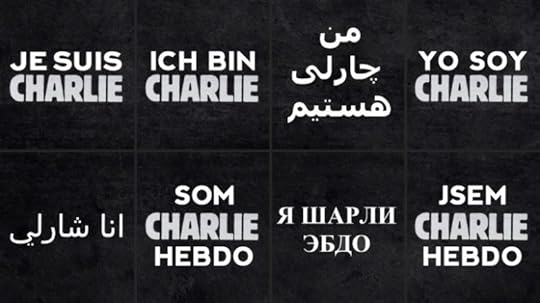 The murderous terrorist attack on the French satirical newspaper Charlie Hebdo’s offices that left twelve persons dead and others injured demonstrated, again, the fragility of free expression. Observant criticism, whether sober or satirical, often provokes strong, emotional reactions. Among extremists, particularly religious and ideological radicals whose ardent fanaticism is rooted in delusional beliefs that admit no contradiction, the reaction can be far out of proportion to the perceived offense.
The murderous terrorist attack on the French satirical newspaper Charlie Hebdo’s offices that left twelve persons dead and others injured demonstrated, again, the fragility of free expression. Observant criticism, whether sober or satirical, often provokes strong, emotional reactions. Among extremists, particularly religious and ideological radicals whose ardent fanaticism is rooted in delusional beliefs that admit no contradiction, the reaction can be far out of proportion to the perceived offense.Most rational people shrug off criticism as insulting but not life-threatening. Criticism based on untruths is countered, sometimes with legal action claiming defamation, libel, or slander. The legal tests are rigorous, particularly in the United States because our Constitution values freedom of expression as articulated in the First Amendment. Extreme beliefs, however, can and often do lead to extreme actions. The Paris massacre is merely the latest example.
U.S. education “reform” initiatives, which have come wave after destructive wave over several decades now, have consistently neglected to emphasize civic education. Such neglect has resulted in an electorate that is ill-informed about governance matters—from what the Constitution says and means to how legislative acts actually affect people’s lives—and largely disengaged from the governance process. As witness there are the abysmally consistent low numbers of citizens who vote. Indeed, voter turnout in the 2014 U.S. general election was the lowest since World War II. Scarcely more than a third of eligible voters cast ballots.
Extremism is an assault on civitas, the idea that civil society is bound in law, which conveys both responsibilities and rights of citizenship. Whether in France, the United States, or elsewhere, fanaticism endangers not only the individual targets of extremism but also the society as a whole. The purpose of civic education, therefore, is not simply to help young people to understand how government functions but to understand how they as citizens can and must participate meaningfully in civil society.
In a free society freedom of expression is a value of considerable worth. Such freedom should not be merely tolerated but prized. But even criticism must be grounded in truth. Satire, such as the Charlie Hebdo cartoons, points up untruths and misinformation and pokes fun at lapses of judgment and delusions. In the United States the satirical Daily Show offers a complementary forum. Part of the charge of civic education is to teach critical discernment, which is the root of satire.
The far more insidious assault on freedom of expression is the promulgation of misinformation as truth or “news.” Effective civic education would help young people become discerning consumers of media, better able to distinguish news from propaganda. As it is, for example, a significant proportion of U.S. citizens takes at face value propaganda purveyed as truth—“news”—by organizations such as Fox News, despite fact-checking which shows that a majority of Fox’s “news” is misleading or blatantly false.
Facts do not change the minds of fanatics. Extremism is impervious to truth, which is why most extremist groups oppose education in favor of indoctrination. If the United States wants to improve education—to enact actual, forward-looking “reform”—then more effective civic education should be a high priority. Comprehensive civic education would help young people become informed citizens less likely in future to be radicalized by mistruths and more likely to be positively engaged in the maintenance of a free civil society.
*This essay is cross-posted on two blogs: Advancing Learning and Democracy (http://advancinglearning.blogspot.com) and Arts in View (http://artsinview.blogspot.com).
Published on January 08, 2015 06:56
December 28, 2014
Love at First Set
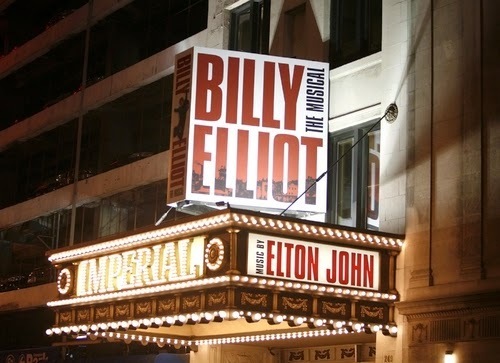
As a thirteen-year-old seventh-grader in Germany, I had my first experience of live theater when a USO troupe brought Guys and Dolls to our military community. I was spellbound. The sets! The costumes! The lights! The music! Real live people performing right in front of our eyes. It was pure magic. And so it has been for the past half century.
The immediacy of live theater—or any live performance—produces, at its best, a miraculous humanity, a connection between viewer and performer that cannot be replicated with images on screens. Whether it’s comic, tragic, or something else scarcely matters. That it’s real people beneath the greasepaint is what counts. And the first time is enough to hook a person for life. At least it was in my case.
A few years ago we took my very skeptical fourteen-year-old godson and his family to the Broadway production of Billy Elliot. My godson, who had protested going, turned to me after the first dance number, eyes full of stars, and whispered, “This is great!” Yes! Exactly! Just yesterday, my partner took two of the grandchildren, ages eight and six, to a local production of Shrek, the Musical. They are likely to remember the experience for a lifetime.
Over the years I’ve seen a great deal of theater and dabbled at being more than a viewer. In high school I designed the set for our production of My Fair Lady, in which Eliza was played by future Oscar-winner Dianne Wiest; she was a senior, I was a sophomore. A decade ago I flew to Wisconsin to watch a high school performance of my own play, Writer’s Catch, that was staged by the school where I’d taught a decade before that. But I’ve always been thrilled simply to be in the audience.
The key factor has not necessarily been who was on stage. I remember vividly seeing Hal Holbrook as Mark Twain, James Earl Jones in a New York production of On Golden Pond, Peter O’Toole in a London production of Man and Superman, Yul Brynner in The King and I, and Carol Channing in Hello Dolly.(Actually I first saw Hello Dolly when Dorothy Lamour played Dolly Levi in a touring version that played Emporia, Kansas, during my undergrad years.) But I have been equally thrilled by local and university productions.
All the world may well be a stage, as Shakespeare opined, but when the house lights go down and the play begins something special happens. We are transported from the ordinary to the extraordinary by that magical, very human connection between the individuals on stage and the individuals in the audience. Curtain up! And I fall in love all over again.
Published on December 28, 2014 01:54

